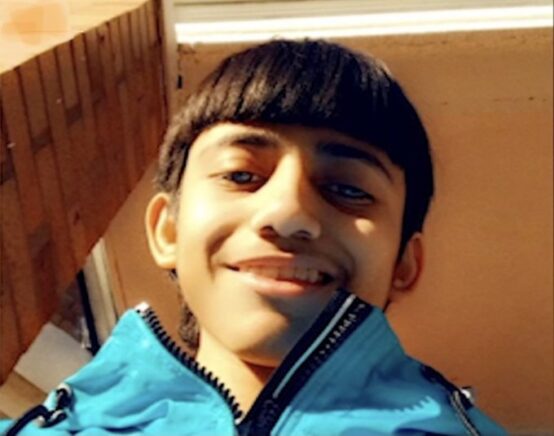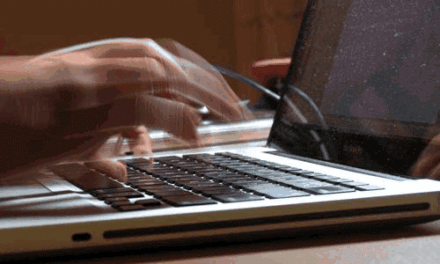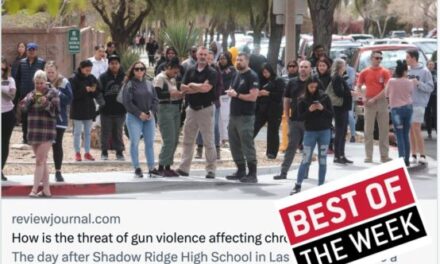We still don’t know enough about the schools Adam Toledo attended and the experiences he had as a student.
By Alexander Russo
On Thursday afternoon, Chicago officials released police body camera footage showing the death of 13-year-old Adam Toledo in an alley, shot by a police officer with his empty hands in the air.
The disturbing video reignited the growing debate over police violence, racist policing, and the mistreatment Black and Latinx communities in America.
Since then, the news coverage of the case has been pretty much nonstop, including community reactions, protests, and stories about police violence. However, three weeks after he was killed, little is known about Adam’s experiences in schools.
That’s too bad. Education reporters have an important role to play in these terrible cases, even when the events take place far away from schools.
Schools are essential support systems for kids. And reporting on the experiences of Adam and other kids like him can provide insight into ways that schools are succeeding or struggling.
“The story of Adam’s experience in the school system sounds all too familiar to some of us,” noted Chicago journalist Mateo Zapata, describing the experience of living in a neighborhood that has experienced a lot of violence and “dealing with a public school system that doesn’t provide the equity or adequate resources to develop academically.”
Schools are essential support systems for kids. And reporting on the experiences of Adam and other kids like him can provide insight into ways that schools are succeeding or struggling.
Here’s what we know so far, thanks to Zapata and a few other journalists who’ve shared tidbits in the course of their reporting:
Adam was a relatively recent arrival at Gary elementary school in the neighborhood known as Little Village, and he was in the 7th grade.
There have been reports that he had an IEP and was placed in a self-contained classroom with a small number of other students with disabilities.
We’ve read that he liked to draw, but that the school didn’t offer an art class. According to some accounts, the school had a strict school uniform policy.
Some of these details come from Zapata’s April 15 Chicago Tribune opinion piece headlined We Are Adam.
“He just needed one friend, one classmate or one other student he could connect with …,” says an unnamed teacher at one of Adam’s schools.
Additional details are provided in Zapata’s April 2nd Facebook post, which notes that staff members noticed changes in Adam’s behavior and “tried bringing up concerns but nobody cared.”
“My immediate thought after hearing the news was maybe we didn’t do enough,” said one teacher Zapata quotes. “Maybe I didn’t do enough but one teacher can only do so much.”
“My immediate thought after hearing the news was maybe we didn’t do enough,” said one teacher quoted by Zapata.
This is a good start, but it’s not enough. In addition to confirming what has already been reported, here are some questions:
Question 1: Did Adam have a computer and WiFi with which to access remote instruction, along with school lunch services that most schools provide?
Many school districts have struggled to get devices and hotspots to kids who need them, and to provide nutrition support in place of what would normally be available.
Question 2: Was he attending school in person or receiving remote learning?
According to the school website, an estimated 120 kids were coming back into the school building this week, joining 70 who had been coming back since January. If I’m reading the schedule right, everyone else was receiving three hours of live instruction a day.
Question 3: Was he receiving the services he was supposed to get through his IEP, and was his IEP appropriate to his needs?
Black and Latino students are generally over-represented in special education and are often placed in more restrictive environments than white students. This past year’s reporting suggests that kids with disabilities have often not received services that they’re entitled to.
Question 4: How many different schools did Adam attend, and did they have the resources and training that they needed to support him?
Schools serving Black and Latinx students are often deprived of the financial and instructional resources that are needed meet students’ needs. Students who transfer (or are pushed out) struggle academically compared to those who remain in a single school.
Question 5: Did Adam run afoul of school rules and face discipline as a student?
Black and Latinx students are often subject to school discipline at rates higher than other students, and sometimes experience negative encounters with school police.
I’m not suggesting that we need coverage that’s intrusive or demeaning to Adam’s family or to Little Village.
I’m not suggesting that we need coverage that’s intrusive or demeaning to Adam’s family or to Little Village. Nobody should be blaming the community or the family for circumstances beyond their control.
Nor am I suggesting that Adam’s schools or individual teachers are in any way responsible for his untimely death, or that reporters should invade the Toledo family’s privacy or pressure educators to violate the family’s federal privacy rights.
But piecing together as much as possible about Adam’s experiences in school is an achievable goal worth pursuing, and journalists should make every attempt to glean useful information from the district, school, the family, and other parents – and then to present it carefully.
Nothing anyone can do will bring Adam back. But illuminating his experiences as a student could help readers understand the larger context of his death and point policymakers towards making long-needed improvements.
“Adam Toledo was failed repeatedly during his brief time on Earth,” noted commentator Kmele Foster. “It would be a shame if we only contemplated his last few minutes here.”
Related from The Grade
Covering communities that are not your own; a reporter reflects
7 resources to help education journalists avoid racial blind spots
ABOUT THE AUTHOR

Alexander Russo
Alexander Russo is founder and editor of The Grade, an award-winning effort to help improve media coverage of education issues. He’s also a Spencer Education Journalism Fellowship winner and a book author. You can reach him at @alexanderrusso.
Visit their website at: https://the-grade.org/














